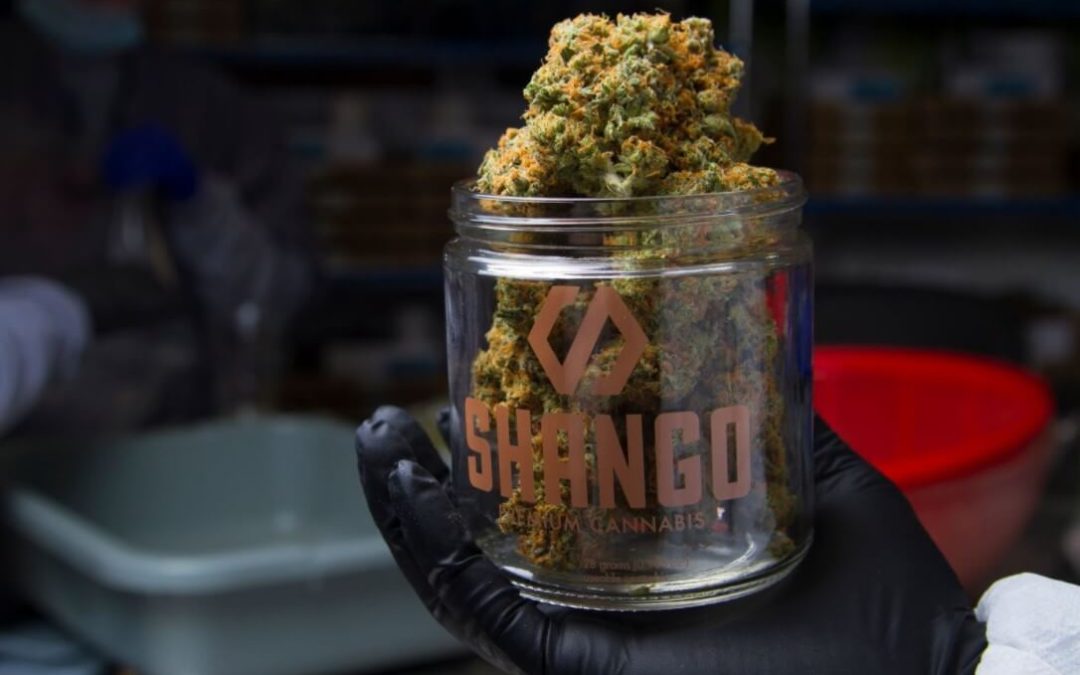As the November election approaches, as many as 10 states are considering legalizing cannabis in the election or during the upcoming year.
As of 2020, 11 states have legalized recreational marijuana use in the United States.
Four states are voting in November on adult-use (recreational) cannabis legalization: Arizona, Montana, New Jersey, and South Dakota.
Oregon voters will consider two separate drug reform measures. One would legalize the medical use of psilocybin. The other would decriminalize small amounts of all drugs.
There are six states looking for 2021 recreational cannabis ballot initiates or legislative action including Arkansas, Florida, Ohio, North Dakota, Missouri and Oklahoma.
Here are the states in which marijuana use is legal. They do not include those that have decriminalized the possession of small amounts of marijuana in states such as Hawaii and New York or those 33 states that allow the use of marijuana for medical purposes.
What’s Up with The Feds
Growing and selling marijuana is illegal under federal law, though that rule has not enforced by the U.S. attorney general in years. This practice began under President Barack Obama, whose administration sought to decriminalize small drug offenses and to give states the power to decide whether they wanted to allow medicinal and recreational marijuana use.
Jeff Sessions, the first attorney general under President Donald Trump, officially reversed the policy, but it has not seen any significant changes in action as lawmakers in both parties opposed Sessions. Sessions has been fired and current AG William Barr has not given the matter any attention.
Despite what the federal government says, these 11 states continue to issue licenses to grow, manufacture products, make edibles and deliver product.
1. Alaska
Alaska became the third state to allow recreational marijuana use in February 2015. The legalization of marijuana in Alaska came by a ballot referendum in November 2014, when 53.23% of voters supported the move to allow the use of the substance in private places. Smoking pot in public, however, is punishable by a modest fine of $100.
Private use of marijuana in Alaska was first declared a right in 1975 when the state Supreme Court ruled that possessing small amounts of the substance was protected under the state constitution’s guarantee of the right to privacy. Under Alaska state law, adults 21 and older can carry up to an ounce of marijuana and possess six plants.
2. California
California state lawmakers legalized the recreational use of marijuana with the passage of Proposition 64 in November 2016, making it the largest state to legalize pot. The measure had the support of 57.13% of the legislature. The sale of marijuana became legal in 2018.
3. Colorado
The ballot initiative in Colorado was called Amendment 64. The proposal passed in 2012 with support from 55.32% of voters in that state on November 6, 2012. Colorado and Washington were the first states to legalize the recreational use of the substance. The amendment to the state constitution allows any resident over the age of 21 to possess up to an ounce (28.5 grams) of marijuana.
Residents can also grow a small number of marijuana plants under the amendment. It remains illegal to smoke marijuana in public. Also, individuals are not able to sell the substance in Colorado.
Colorado governor John Hickenlooper, a Democrat, officially proclaimed marijuana legal in his state on December 10, 2012. “If the voters go out and pass something and they put it in the state constitution, by a significant margin, far be it from myself or any governor to overrule. I mean, this is why it’s a democracy, right?” said Hickenlooper, who opposed the measure and is running for the U.S. Senate. Signing recreational cannabis was the best thing he did as governor, he admitted.
4. Illinois
The state’s General Assembly passed the Illinois Cannabis Regulation and Tax Act on May 31, 2019, and it was signed by Governor J.B. Pritzker on June 25. The law went into effect on January 1, 2020. It allows Illinois residents at least 21 years old to possess up to 30 grams of marijuana. The limit is 15 grams for non-residents. The state is currently experiencing higher sales than expected and has exceeded $60 million in sales per month.
5. Maine
Voters approved the Marijuana Legalization Act in a 2016 referendum. Individuals can possess up to 2.5 ounces (71 grams) of cannabis, up to three mature plants, 12 immature plants and an unlimited number of seedlings. The state did not, however, begin issuing commercial licenses to sell the drug immediately because state lawmakers could not agree on how to regulate the industry.
6. Massachusetts
Voters legalized recreational marijuana in November 2016. Individuals can possess up to one ounce of cannabis and grow up to six plants at their homes. Homes with more than one adult can grow up to 12 plants. Cannabis must be locked up and not visible in cars, and smoking while driving or in public is illegal. The state’s Cannabis Advisory Board continues to work on regulations but is reportedly planning to allow the use of the substance in retail spaces, unlike most other states.
7. Michigan
Voters legalized the recreational use of marijuana in November 2018. The Michigan Regulation and Taxation of Marijuana Act allows individuals to possess up to 2.5 ounces of marijuana outside their home and 10 ounces inside their home. Up to 12 plants per household are allowed. Licensed retail businesses can grow up to 150 plants for sale. Individual cities had a choice to opt in or out and 1,400 jurisdictions did not, leaving only a few areas in the state that can sell at this time.
8. Nevada
Voters passed Question 2 in the 2016 election, making recreational marijuana legal as of 2017. Adults ages 21 and older can possess up to one ounce of cannabis and up to an eighth ounce of concentrate. Public consumption is punishable by a $600 fine. The measure had support from 54.47% of voters. The state is considering cannabis lounges as a place to smoke because smoking on the Strip isn’t legal but often happens.
9. Oregon
Oregon became the fourth state to allow the recreational use of marijuana in July 2015. The legalization of marijuana in Oregon came by ballot initiative in November 2014, when 56.11% of voters supported the move. Oregonians are allowed to possess up to an ounce of marijuana in public and eight ounces in their homes. They are also allowed to grow as many as four plants in their homes.
10. Vermont
The state legislature passed HB511 in January 2018, which allows an individual to possess one ounce of cannabis and two plants. No commercial sales are allowed. The law took effect on July 1, 2018.
11. Washington
The ballot measure approved in Washington was called Initiative 502. It was similar to Colorado’s Amendment 64 in that it allows state residents ages 21 and older to possess up to an ounce of marijuana for recreational use. The measure passed in 2012 with the support of 55.7% of voters in the state. The Washington ballot initiative also put in place substantial tax rates imposed on growers, processors, and retailers. The tax rate on recreational marijuana at each stage is 25 percent, and the revenue goes to state coffers.
District of Columbia
Washington, D.C., legalized the recreational use of marijuana in February of 2015. The measure was supported by 64.87% of voters in a November 2014 ballot initiative. If within the nation’s capital, you’re allowed to carry up to two ounces of marijuana and grow as many as six plants at home. You can also gift a friend up to an ounce of cannabis.
The Future
There are numerous bills that have been written and passed in the House of Representatives, but have stalled in the Senate. If the Senate goes Blue in November, look for some cannabis bills that could legalize marijuana entirely and take if off the Schedule List of Drugs by the DEA.


